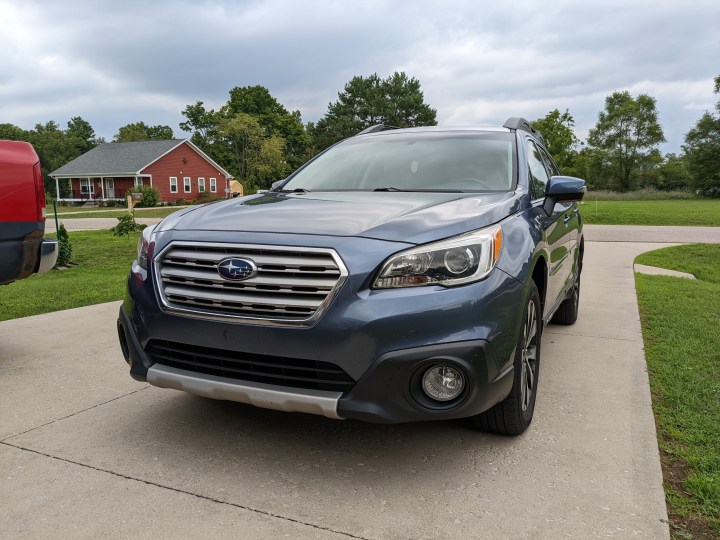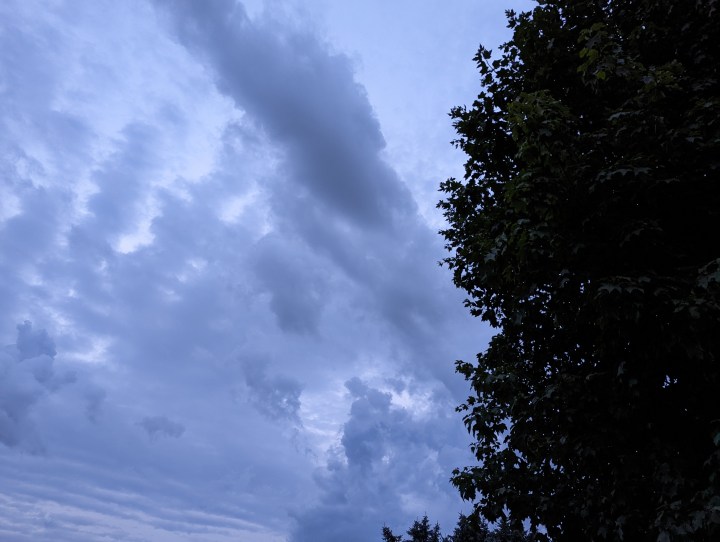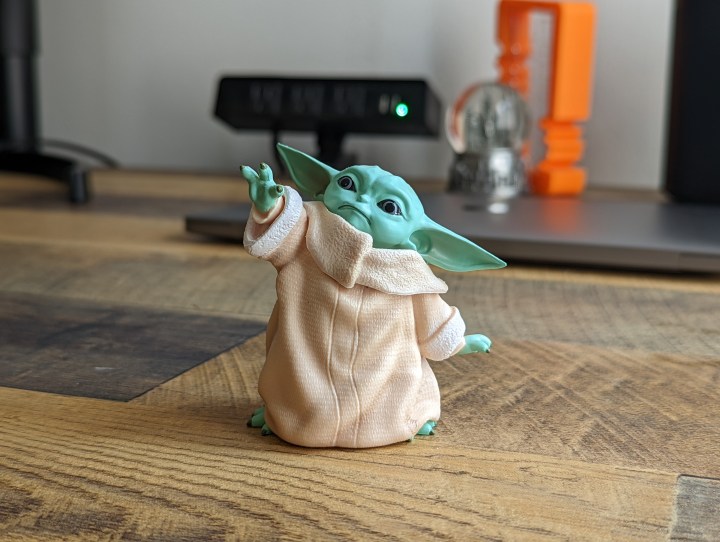The Pixel 6a and Pixel 6 each stand out as two of Android’s best smartphone values in 2022 — especially if you really care about camera performance. This is something Google’s Pixel series has always been known for, even dating back to the original Pixel in 2016. If you want a smartphone that has a solid, reliable camera system, the Pixel brand is often the way to go.
Google reinvigorated its Pixel camera formula late last year with the Pixel 6 — adding a brand-new camera sensor and new software tricks. But for the Pixel 6a, Google’s re-using its tried-and-true camera from older Pixels. Was that a smart move to reach the Pixel 6a’s lower $449 price? Or does the Pixel 6 stand out as the clear winner?
Pixel 6a vs. Pixel 6 camera specs

Before digging into the photos themselves, let’s take a look at what we’re working with. The Pixel 6a is equipped with a 12.2-megapixel main camera with optical image stabilization (OIS) and an f/1.7 aperture. It’s the exact same camera sensor Google’s been using since the Pixel 2! Additionally, the Pixel 6a has a 12MP ultrawide camera with an f/2.2 aperture and 114-degree field-of-view, along with an 8MP selfie camera.
The one difference with the Pixel 6 is its main camera. It swaps out the Pixel 6a’s 12.2MP camera for a 50MP one. It has an f/1.85 aperture, OIS, and laser-detect autofocus (versus phase-detect autofocus on the 6a). The 12MP ultrawide camera and 8MP selfie camera are identical between the Pixel 6 and Pixel 6a.
Similarly, since the Pixel 6a and Pixel 6 share the same Google Tensor chipset, both phones have identical camera features. This includes Night Sight, Super Res Zoom, Live HDR+, Real Tone, Face Unblur, and Magic Eraser. It all creates for a pretty interesting matchup — so which phone comes out on top?
Main camera
We’ll kick things off with a test of the Pixel 6a and Pixel 6’s main camera. The first photo of the car is an easy shot for both phones. It was taken on a cloudy day around 5:00 p.m., but there was ample outdoor lighting. Both photos look very good at first glance. The color profile in both is nearly identical, which is true-to-life and pleasing to the eye.
There’s also good detail in both shots, with both the Pixel 6a and Pixel 6 capturing smaller details in the car’s grille and headlights. The only perceivable difference is the added natural bokeh of the Pixel 6’s shot. It’s most noticeable with the red house in the background. The Pixel 6a tries to keep the details of the panels in focus, while the Pixel 6’s larger sensor blurs them to make the car pop just slightly more.
- 1. Pixel 6a
- 2. Pixel 6
- 3. Pixel 6a
- 4. Pixel 6
This is even more noticeable in the photo of the white flower. Even though this was not taken in portrait mode, the larger sensor of the Pixel 6’s 50MP camera allows it to naturally blur the background more for a strong depth of field. The Pixel 6a also tries to do this, but the strands of grass in the background are much more distracting. That said, the Pixel 6 also blurs the edges of the flower, while they look sharper in the Pixel 6a’s shot.
In almost all of my shooting with the Pixel 6a and Pixel 6, the phones produce nearly identical colors. However, I captured an interesting difference between them with the below shot of an eerie sky right before a rainstorm. The Pixel 6a gives the sky a stronger blue tone, while the Pixel 6 shows it with a purple tint. The Pixel 6a also retains more of the green in the leaves of the three. Comparatively, the Pixel 6 chose to darken the leaves for a more intense look.
- 1. Pixel 6a
- 2. Pixel 6
This particular shot really comes down to personal preference. If I were to choose a favorite, I’d go with the Pixel 6. I like how it represents the sky, as it’s more interesting and more accurate to what I saw with my own eyes.
And that’s what it usually comes down to when comparing the main camera on the Pixel 6a and Pixel 6. Both sensors reliably kick out very good-looking photos, but once you put them side-by-side and examine them with a closer eye, the more capable 50MP camera in the Pixel 6 shows its prowess.
Winner: Google Pixel 6
Speaking of Pixels ...
Ultrawide camera
But, as mentioned above, the 50MP main camera is the only hardware difference between the Pixel 6a and Pixel 6. When it comes to the 12MP ultrawide camera, both phones have the exact same sensor. And it shows!
We’ll start with the photo of the pond. While there are no challenging lighting conditions, there is a lot happening here. We have a bright blue sky, a couple of white clouds, a flowing fountain in the middle of the water, and an abundance of trees and bushes surrounding it.
- 1. Pixel 6a
- 2. Pixel 6
- 3. Pixel 6a
- 4. Pixel 6
After closely examining both photos next to each other, I struggle to notice any clear difference between the Pixel 6a and Pixel 6’s images. The trees in the background of the Pixel 6a’s photo are slightly brighter than they are in the Pixel 6 photo, but that’s about it. Each one did a great job handling the various colors, though I would have liked some extra detail in both shots.
Moving on to the photo of yellow flowers, we end up with about the same conclusion. These are both good photos, featuring vibrant, accurate colors and a wide view that doesn’t succumb to distortion. In this instance, however, the Pixel 6 has more detail in the center of each flower — despite being taken at a slightly further angle away. It’s a nice advantage for this particular photo, but I’ve been equally happy with both ultrawide cameras in my testing.
Winner: Tie
Digital zoom
Neither the Pixel 6a nor Pixel 6 have a dedicated telephoto camera. However, the camera app for both phones shows a prominent 2x button — encouraging you to snap digitally-zoomed photos. As such, it’s only fair we put that to the test too.
Starting with the photo of the outdoor bird decoration, the Pixel 6 captures a little more detail in the bird’s metal construction than the Pixel 6a is capable of. The difference isn’t huge, but when zooming in closely on the bird’s face, it looks a bit softer in the Pixel 6a’s shot.
- 1. Pixel 6a
- 2. Pixel 6
- 3. Pixel 6a
- 4. Pixel 6
The Pixel 6 again captures more detail in the photo of the baby Grogu figurine. It’s hard to notice a difference at first, but zooming in on Grogu’s face, the Pixel 6 image is sharper than the Pixel 6a’s. But that’s not the only advantage it has. The Pixel 6a creates a green halo around Grogu’s head and ears, while the Pixel 6 separates them from the background more clearly. As we saw in the main camera test, the added bokeh from the larger 50MP camera can be a big advantage.
Winner: Google Pixel 6
Portrait mode
As mentioned at the beginning of this camera test, the Pixel 6a and Pixel 6 share many of the same camera features — portrait mode included. Shooting in portrait mode uses the main camera on each phone. That means the 12.2MP camera on the Pixel 6a and the 50MP camera on the Pixel 6.
- 1. Pixel 6a
- 2. Pixel 6
We’ll begin with the photo of the blue teapot. The Pixel 6a uses a much more intense blurring effect for the background, whereas the Pixel 6 isn’t quite as aggressive. It makes the teapot stand out more clearly in the Pixel 6a’s photo, though it’s not without faults. The Pixel 6a incorrectly blurred out the top of the teapot’s lid, whereas the Pixel 6 kept it clearly in focus. The Pixel 6a also blurs out the gold handle of the teapot. The Pixel 6 does not.
- 1. Pixel 6a
- 2. Pixel 6
Surprisingly, the Pixel 6a outperforms the Pixel 6 in the photo of my partner standing outside. Both phones had a difficult time handling their hair. The Pixel 6a opted for blurring more of it; the Pixel 6 tried to keep more in focus, but only got about halfway there, making the blur effect look very artificial. If you look at the background in between my partner’s arm on their hip, the Pixel 6 failed to blur the road closest to their shirt. By comparison, the Pixel 6a handled it flawlessly.
Looking beyond the portrait effect, I prefer the overall look of the Pixel 6’s photo. My partner’s face and shirt are considerably brighter than they appear in the Pixel 6a’s photo, likely thanks to the Pixel 6’s newer camera handling the evening light more effectively. Between that and its better performance with the teapot photo, it closely edges out a win here.
Winner: Google Pixel 6
Night mode
Another feature you’ll find on both the Pixel 6a and Pixel 6 is Night Sight (Google’s dedicated night mode). You can manually enable Night Sight at any time, or it’ll automatically engage if either phone detects that the scene you’re trying to shoot is too dark. For both photos below, the Pixel 6a and Pixel 6 automatically switched to Night Sight.
- 1. Pixel 6a
- 2. Pixel 6
This picture was taken at 9:45 PM and over half an hour past sunset. In other words, it was basically pitch black outside, save for the couple of lights you can see in the top right and bottom left. While both phones did a great job brightening the scene and making everything clearly visible, the Pixel 6 takes the lead.
Right away, you can see that the Pixel 6 handles the sky better. It has a very deep and saturated blue in the Pixel 6a’s photo, whereas the Pixel 6 makes it less overly colorful. And as you zoom in throughout the photos, the Pixel 6’s photo is sharper — retaining more detail in things like the grass and sign. The Pixel 6a does a commendable job given its aging camera sensor and lower price, but that doesn’t stop the Pixel 6 from coming out ahead.
Winner: Google Pixel 6
Portrait selfie
Last but certainly not least, let’s take a look at the selfie camera. As previously mentioned, the Pixel 6a and Pixel 6 use the same 8MP selfie camera. And as expected, the results are very similar.
- 1. Pixel 6a
- 2. Pixel 6
This is another example where it’s extremely difficult to see any discernable difference between the photos. The Pixel 6a and Pixel 6 produce near-identical colors, similar sharpness, and do a (mostly) good job with the portrait effect. Both phones handled my hair quite well, though they also each had a small hiccup around my right cheek where the portrait blur stops a little too early. Overall, they’re both solid pictures.
Winner: Tie
The Pixel 6 is the clear winner, but not by much

So, where does that leave us? Of the six categories I tested, the Pixel 6 won four, there were two ties, and the Pixel 6a won zero outright. It’s no surprise that the Pixel 6 won, but considering the lesser camera hardware and lower price of the Pixel 6a, it is impressive just how closely it was able to keep up with its more expensive sibling.
The biggest advantage of the Pixel 6 is the added detail and natural bokeh you get from its 50MP main camera. These benefits aren’t always immediately visible, but upon closer inspection, they are present. The Pixel 6a takes great photos, but the Pixel 6’s images are just a little better.
But let’s not forget that difference in price. The Pixel 6 starts at $599, while the Pixel 6a can be had for just $449. Seeing firsthand just how well its camera can keep up with the Pixel 6 — combined with the lightweight design I love so much — further reaffirms my eagerness to recommend the Pixel 6a to people. It’s not a perfect smartphone, but for the price Google’s asking, it’s pretty darn good. Especially in the camera department.























